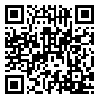

Volume 15, Issue 1 (4-2017)
RBS 2017, 15(1): 6-12 |
Back to browse issues page
Download citation:
BibTeX | RIS | EndNote | Medlars | ProCite | Reference Manager | RefWorks
Send citation to:



BibTeX | RIS | EndNote | Medlars | ProCite | Reference Manager | RefWorks
Send citation to:
امانالهي ع, جزيني ش, رجبي غ. Prediction of Sexual Dysfunctions Based on Sexual Beliefs among Married Female Students in Ahvaz, Iran. RBS 2017; 15 (1) :6-12
URL: http://rbs.mui.ac.ir/article-1-509-en.html
URL: http://rbs.mui.ac.ir/article-1-509-en.html
Abstract: (3844 Views)
Aim and Background: The purpose of the present study was the prediction of sexual dysfunctions based on components of sexual beliefs including sexual conservatism, sexual desire and pleasure as a sin, age-related beliefs, body image beliefs, denying affection primacy, and motherhood primacy among married female students in Ahvaz, Iran. Methods and Materials: The research method used was correlational. The statistical population consisted of all married female students of universities in Ahvaz in 2015, from among which 200 participants were selected through convenience sampling. The data gathering tools used included the Female Sexual Dysfunction Index (Rosen et al.), Sexual Dysfunctional Beliefs Inventory (Nober). Data were analyzed using stepwise discriminant analysis in SPSS software. Findings: Data analysis showed that linear combination of the variables of sexual conservatism, sexual desire and pleasure as a sin, age-related beliefs, body image beliefs, denying affection primacy, and motherhood primacy can predict sexual dysfunction among married female students with 78.5% accuracy. The most efficient predictor of sexual dysfunction was the sexual desire and pleasure as a sin variable with the significance level of 0.001. Conclusions: Beliefs as a personal attitude have an important role in individuals’ sexual dysfunctions. Thus, beliefs must be considered as an important factor in the counseling and treatment of people with sexual dysfunctions.
Type of Study: Research |
Subject:
General
Received: 2020/02/8 | Accepted: 2017/04/15 | Published: 2017/04/15
Received: 2020/02/8 | Accepted: 2017/04/15 | Published: 2017/04/15
| Rights and permissions | |
 |
This work is licensed under a Creative Commons Attribution-NonCommercial 4.0 International License. |



